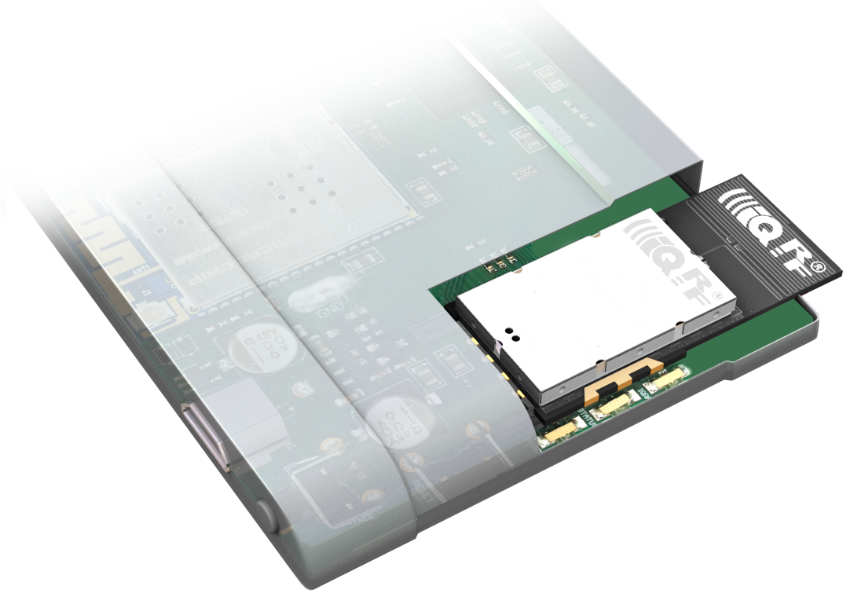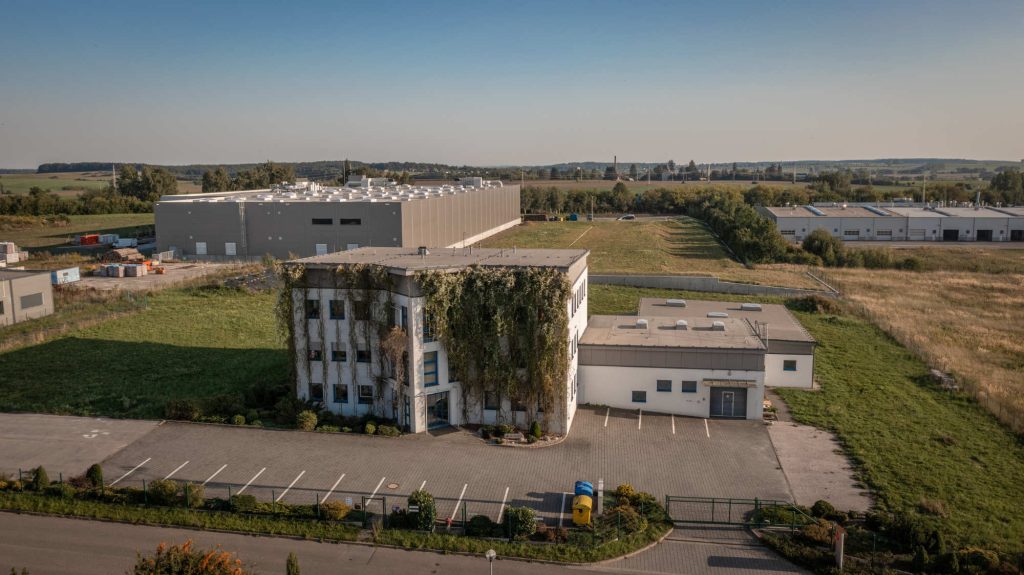Since 2004, MICRORISC and IQRF Tech engineers have developed IQRF®. The IQRF® is a wireless mesh technology, open standard and ecosystem for manufacturers and integrators to simply design and deliver interoperable wireless products and systems. IQRF delivers robustness and industrial reliability for wireless Internet of Things (IoT) applications.
IQRF® is ideal for adding effortless wireless connectivity to any product. It excels in mesh network routing reliability, enabling seamless communication over hundreds of routers for dependable, scalable integration.
What are the main areas of activity of the company?
Adéla Slezáková: Research and development of wireless MESH networks and technologies is our main expertise. Wireless Mesh Networks (WMNs) are distinguished by routing and scalability. Given the technical challenges associated with reliable wireless mesh routing, IQRF® engineers have prioritized this issue.
IQRF® has efficiently resolved challenging routing in WMNs and defined a new standard for WMN´s reliability. The IQMESH® routing protocol facilitates robust message transmission across extensive networks, supporting up to 255 hops and a coverage range 500 meters per 1 device. It was specifically developed to improve network reliability as the wireless system scales. IQRF® is great for large-scale and high-density environments.
What’s the news about new products/services?
A.S: IQRF® is a wireless mesh technology delivering industrial reliability, simple integration, ultimate security, interoperability, and the IQRF True Low Power® as key values.
After two decades in the market, we introduced the IQRF® communication standard, and released its specifications. This enables all users to access and implement all the technical achievements under one royalty-free license. The IQRF open standard guarantees independence, particularly in mass production, and includes a variety of enhanced features.
More than 20 years of continuous research and development for and with customers crystalized in state-of-art communication technology featuring:
Industrial reliability
Thanks to the IQMESH® protocol, more network nodes mean higher reliability. IQRF® is deterministic and reliable even in difficult environments. With 255 repeating nodes operating within a mesh topology, IQRF® effectively covers extensive facilities, industrial spaces, and urban environments, ensuring reliable message transmission even in challenging RF conditions.
Simple integration
Modular architecture, lightweight yet efficient DPA protocol, hardware and software development tools, plenty of guides, examples, and tutorials along with excellent technical support make development easy.
Ultimate security
The comprehensive approach to device and network association, leading to automatically encrypted communication, is grounded in established security standards. The security services layer is responsible for ensuring the following security objectives: frame integrity, networking frame authenticity, footer and payload confidentiality, replay protection.
Interoperability and huge ecosystem

IQRF® is easy to integrate into various products due to its simple configuration and support for different network topologies. This makes it versatile for both consumer and industrial applications. The interoperability of devices from different manufacturers is based on IQRF interoperability standards.
IQRF True Low Power® consumption
IQRF® is designed to operate efficiently with minimal power consumption, making it suitable for battery-powered devices and applications where energy efficiency is crucial. Low wireless consumption pushes battery limits to the new boundaries defined only by the battery’s self-life.
A smart combination of different power consumption modes, from transmit mode to deep-sleep mode, makes it possible to achieve low total power consumption. For instance, a sensor transmitting data every minute can operate for over 20 years on a single AA battery, surpassing the typical battery lifespan.
What are the ranges of products/services?
A.S: IQRF® has evolved in a huge ecosystem consisting of transceivers, development tools, devices, products, software, firmware, documentation, cloud services, protocols, huge IP, and ready-to-use systems. It is ideally suited for a wide range of applications, including lighting, facility management, industrial automation, temperature control, environmental monitoring, production line oversight, and more.
Based on user requirements, systems may be employed for facility or urban applications, or corresponding IQRF components to enable wireless functionality in their products, including ready-to-use solutions or compatible offerings from partner vendors. Development tools facilitate usage across various levels of expertise, and our R&D team is available to provide support or create custom designs.
An exemplary ready-to-use-product is the IQAROS, a pre-configured 3D measurement system that is prepared for immediate deployment. This system enables autonomous wireless monitoring of temperature, humidity, carbon dioxide (CO2) concentration, and smoke levels. It efficiently monitors environmental conditions in diverse indoor settings, including warehouses, retail spaces, power generation facilities, manufacturing plants, and other locations, while providing wireless connectivity across multiple tiers.
What is the state of the market where you are currently active?
A.S: The Internet of Things (IoT) ecosystem is complex and frequently marked by unfulfilled anticipations. Wireless mesh networks are still a topic even over twenty years from the first indication of market success at Gartner Hype Cycles. Too many trade-offs and limitations exist in latency, hop count limits, determinism, and reliability through all the globally supported wireless mesh networking technologies until today.
The reason is simple: technical concepts focused primarily on routing optimization rather than reliability. Contrary to that approach, the IQRF® has focused on reliable message delivery as the primary value.
What can you tell us about market trends?
A.S: Numerous projects face challenges concerning the costs associated with wireless transmission, the security and reliability of wireless communication, and energy consumption during data transmission. IQRF effectively addresses all of these concerns.
Transmission in the IQRF network is free of licensing fees, unlike other Low Power Wide Area Network (LPWAN) technologies.

IQRF demonstrates both reliability and security due to its mesh topology and local autonomy. The mesh communication structure offers crucial redundancy in communication pathways and performs effectively under challenging conditions, eliminating the need for recalculation of optimal routing paths.
IQRF communication is secured using the industrial standard AES-128, along with mechanisms for device addition and management. Additionally, the transmitted data can be further enhanced in security through the built-in features of the IQRF operating system, even beyond the IQRF network.
The IQRF communication transceivers are designed to address environmental challenges by integrating multiple power-saving modes, including the ability to synchronize data transmission with deep sleep mode. This functionality substantially decreases energy consumption, thereby enhancing the environmental sustainability of the devices and systems.
What are the most innovative products/services marketed?
A.S: The IQRF wireless transceiver functions as a core communication element within the IQRF wireless mesh technology framework. The incorporation of certified, pre-configured, and optimized IQRF wireless transceivers into electronic devices facilitates efficient and cost-effective wireless control and monitoring applications. The newly introduced transceiver series offers seamless upgrade pathways to integrate features that comply with the IQRF Open Standard.
With IQRF transitioning to the IQRF open standard for wireless mesh networks, there is a systematic evolution from legacy IQRF to the updated IQRF platform. This transition offers manufacturers improved capabilities and expanded functionality. Manufacturers have the opportunity to leverage the fundamental features of this technology while incorporating necessary improvements to their products.
What estimations do you have for 2024?
A.S: Individuals will seek innovative solutions, with an increasing demand for greater autonomy. Security and reliability are essential; there must be no faults, no interrupted connections, no time inefficiencies, and no potential for errors. In IQRF wireless mesh networks, a greater number of nodes is associated with improved reliability. As the system expands and becomes denser, the network’s resilience also increases. IQRF guarantees reliability and successful wireles connectivity, even in very demanding conditions.
With respect to application characteristics, the IQRF ensures industrial-grade reliability for all projects when reliability is a must.
See more at fineeng.eu